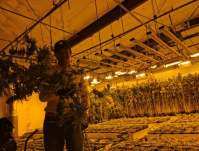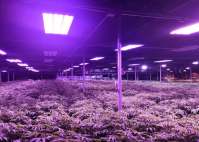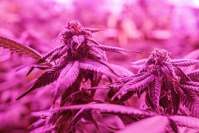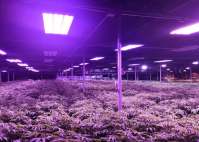We generally know that the light time of plants is from morning to night, and the default is that the light time from morning to night is beneficial to plant growth. Because of the different types of plants, the required lighting time at certain stages is different, and the lighting time of the LED grow light can be controlled artificially, so as to give the plant the best growth state. First of all, we have to understand the light characteristics of plants:
Short-illuminated plants: refers to plants that bloom when the light period is less than a certain value according to the regular light period. Short-light time can meet the growth needs of such plants. If they are planted outdoors, LED grow lights are generally not needed.
Common short-light plants are: soybean, morning glory, chrysanthemum, tobacco and so on.
Intermediate lighting plants: This type of plants does not require very strict lighting time, but the use of LED grow lights can appropriately shorten their growth cycle. Such plants can be matched with LED grow lights to supplement the light, which will increase the yield and market in advance.
Common intermediate plants are: cucumber, dandelion, string beans, tomato and so on.
Long-light plants: refers to plants that require a long light time. The light time must reach the light that meets the light cycle of the plant before the plants will bloom and set fruits. Otherwise, they will only grow normally and will not bring a better harvest. The light time is insufficient It will seriously affect the plants that need to be aligned and filled with LED grow lights.
Common long-day plants are: impatiens, wheat, spinach, radish and so on.
To use LED grow lights to supplement light, you need to know the light time required by various plants, understand the light required for the photoperiod of plants, make adjustments to plant growth, and use LED grow lights to supplement light to increase crop yield and quality.
In addition to light time, the intensity of LED grow light will have an important impact on plant growth. Li Changying and Zhu Qijie (1997) studied the effect of light intensity on the photosynthetic mechanism of cucumber leaves and found that the light saturation point and light compensation point also increased with the increase of light intensity.
The light intensity of LED plants also regulates the stomata that affect photosynthesis. With the increase of light intensity, the stomata opening and stomata pore area per unit leaf area increase gradually. The study found that the stomata opening degree of the test tube seedlings of Dendrobium candidum increases with the light intensity. When the light intensity is 18 umol-n2s, the stomata of the leaves shrink and the stomata open rate is 0: when the light intensity is 54 umol*m-2s-1, the stomata open degree is the largest and the CO2 transportation resistance is also the smallest. In order to protect the photosynthetic structure of seedlings under high light intensity, reduce the stomata opening. The smaller the stomata opening, the more it can inhibit photosynthesis by increasing the diffusion resistance of CO2 uptake and reduce the burden on the photosynthetic organs.
With the wide application of LED grow lights in the field of facility agriculture, there are also many scholars who have controlled the lighting time of LED grow lights and different light intensities under the controllable conditions of other environmental factors to study the effects of plant growth, combined with plant characteristics, Get better environmental conditions for plant growth and make an important contribution to the development of plant cultivation in my country.






